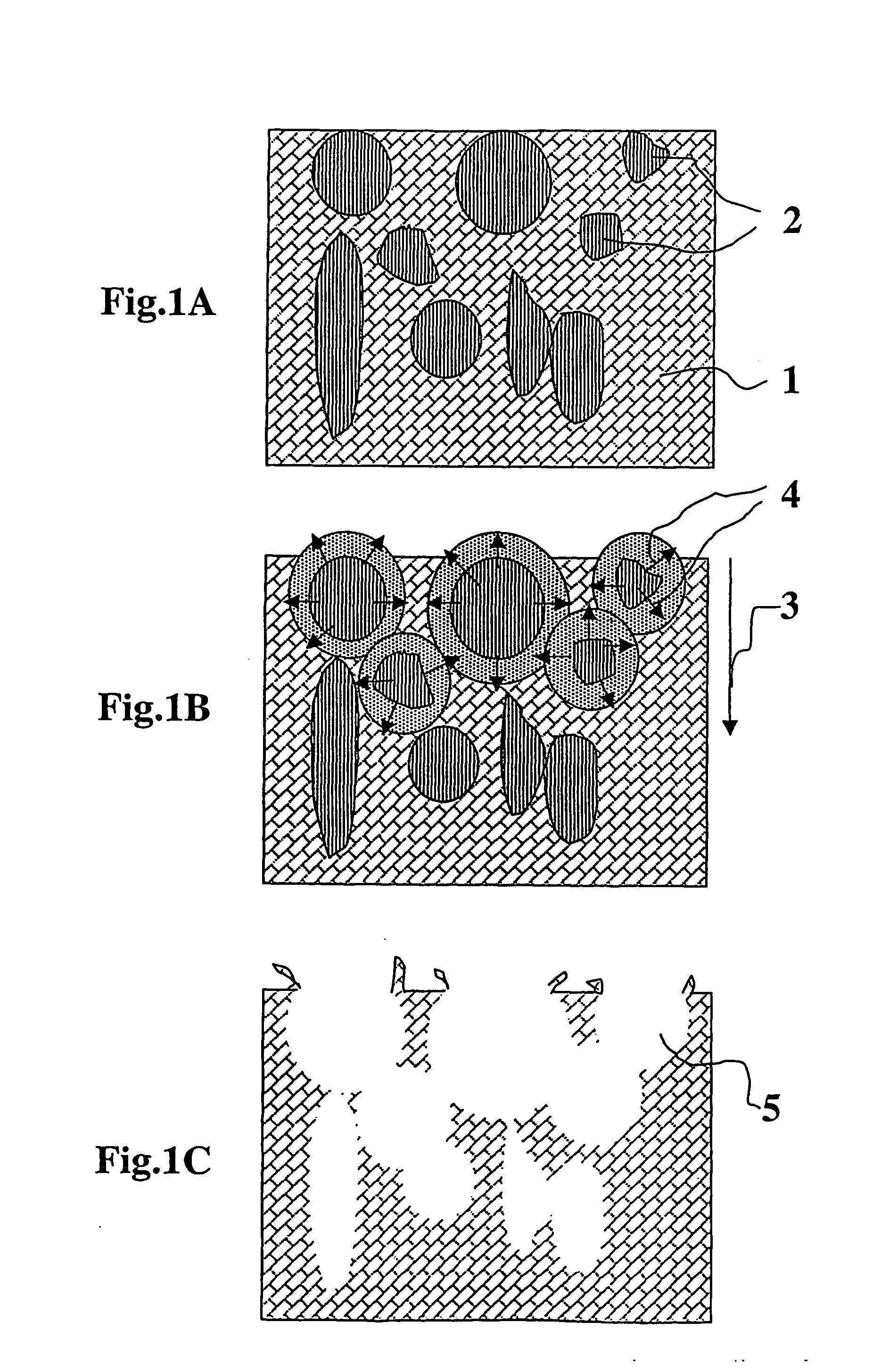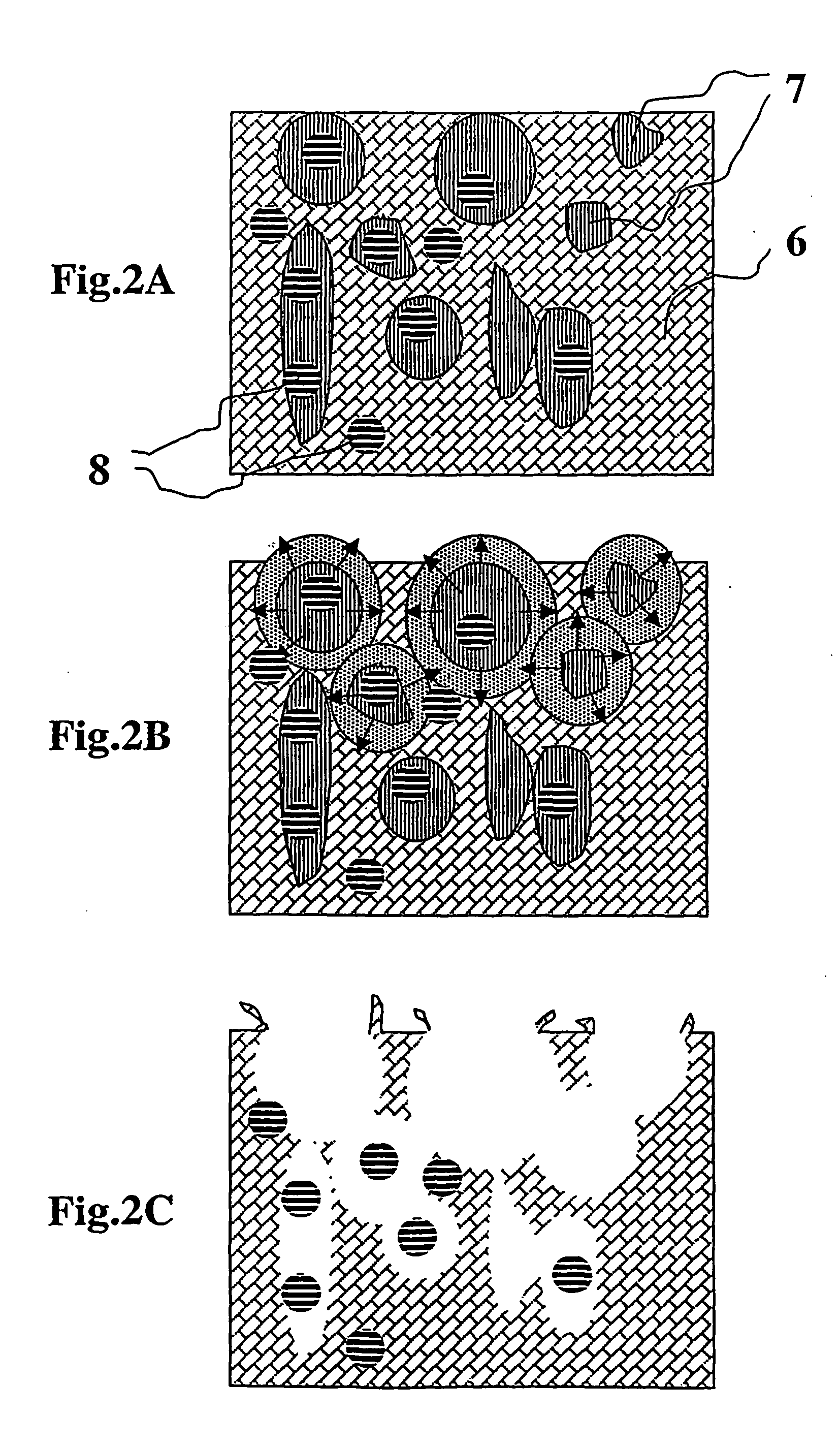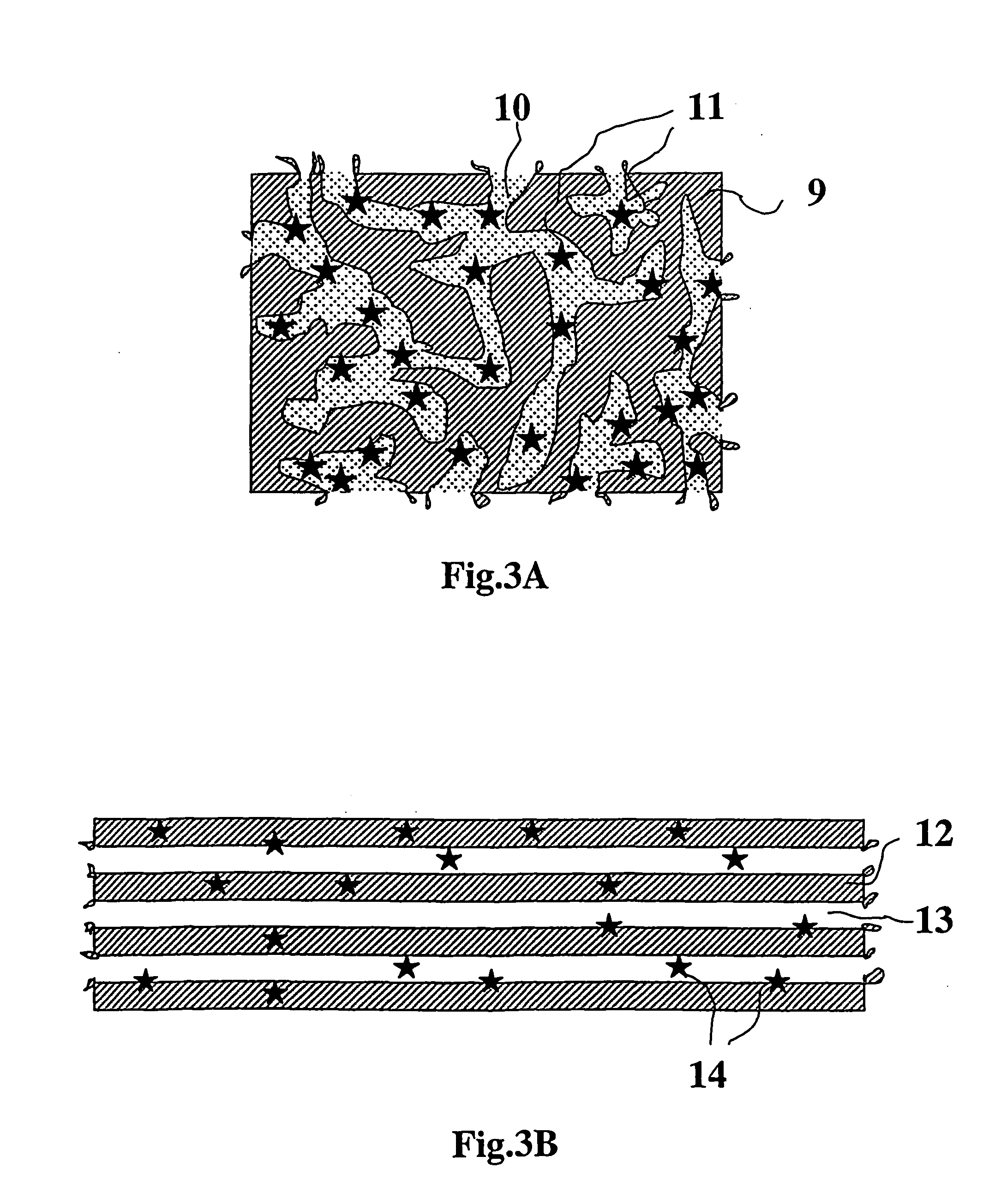Composite for attaching, growing and/or repairing of living tissues and use of said composite
a technology for living tissues and composites, applied in the field of composites for attaching, growing and/or repairing living tissues and using them, can solve the problems of site morbidity, restricting their use, and between composites and living tissues that are normally only mechanical, so as to speed up pore formation, reduce the flexural and compressive properties of composites, and reduce the molecular weight of porosity agents
- Summary
- Abstract
- Description
- Claims
- Application Information
AI Technical Summary
Benefits of technology
Problems solved by technology
Method used
Image
Examples
example 1
[0080] Chiral Polyamide of Hydroxyproline
[0081] Trans-4-hydroxy-L-proline methylester hydrochloride salt was synthesised from trans-4-hydroxy-L-proline (100 mol-%) in methanol and acetyl chloride (120 mol-%). Dried methanol was pre-cooled and stored in an ice / salt bath at 0.degree. C., after which acetylchloride was added into the methanol extremely slowly, during a 30 minute period. Trans-4-hydroxy-L-proline was mixed with the dried methanol, and it was then added into a HCl-methanol mixture. The mixture obtained was stirred at a refluxing temperature under argon. Trans-4-hydroxy-L-proline methylester hydrochloride salt was a white crystalline solid.
[0082] Trans-4-hydroxy-L-proline methylester (monomer) was prepared from trans-4-hydroxy-L-proline methylester hydrochloride salt obtained by using an excess of the anionic ion exchange resin Amberlite IRA-400 .RTM. (by Fluka) (OH-form, 20-50 mesh) in methanol. The solvent was evaporated. The monomer trans-4-hydroxy-L-proline methyleste...
example 2
[0084] Chiral Polyester of Hydroxyproline
[0085] Trans-4-hydroxy-L-proline methylester hydrochloride salt was synthesised from trans-4-hydroxy-L-proline (100 mol-%) in methanol and acetyl chloride (120 mol-%). Dried methanol was pre-cooled and stored in an ice / salt bath at 0.degree. C., after which acetylchloride was added into the methanol extremely slowly, during a 30 minute period. Trans-4-hydroxy-L-proline was mixed with dried methanol and added into the HCl-methanol mixture. The mixture obtained was stirred at a refluxing temperature under argon. The reaction mixture from the preparation of the methyl ester of trans-4-hydroxy-L-proline HCl-salt was cooled to 30.degree. C. NaOH-solution (2 M, 120 mol-%) was added to the mixture. After this benzyl-chloride (120 mol-%) was added, and the mixture obtained was allowed to reflux for 1 h. Finally, NaOH-solution (2 M, 120 mol-%) was added at ambient temperature (25.degree. C). A purified monomer, trans-4-hydroxy-N-benzyl-L-proline methy...
example 3
[0088] Preparation of acrylic bone cement composite modified with the polyamide of trans-4-hydroxy-L-proline AP(HP)
[0089] A commercial polymethylmethacrylate (PMMA) and polymethylmethacrylate- polymethylacrylate (PMMA-PMA) copolymer based bone cement (Palacos.RTM. R by Schering-Plough Labo n.v., Heist-op-den-Berg, Belgium) was used. Each dose of surgical bone cement consisted of 40 g of a PMMA-PMA copolymer and an ampoule with 18 g of methylmethacrylate (MMA) monomer. The mixture of PMMA-PMA / PMMA based bone cement with 20 wt-% of an experimental polyamide of trans-4-hydroxy-L-proline was used for the preparation of the test sample. The polymer powder (PMMA-PMA copolymer) was first mixed with the polyamide of trans-4-hydroxy-L-proline and the powder mixture was then mixed with the monomer solution (MMA) at room temperature. The blending of PMMA-PMA copolymer and polyamide of trans-4-hydroxy-L-proline powder together with MMA was accomplished by hand mixing for about 0.5 min. The bone...
PUM
 Login to View More
Login to View More Abstract
Description
Claims
Application Information
 Login to View More
Login to View More - R&D
- Intellectual Property
- Life Sciences
- Materials
- Tech Scout
- Unparalleled Data Quality
- Higher Quality Content
- 60% Fewer Hallucinations
Browse by: Latest US Patents, China's latest patents, Technical Efficacy Thesaurus, Application Domain, Technology Topic, Popular Technical Reports.
© 2025 PatSnap. All rights reserved.Legal|Privacy policy|Modern Slavery Act Transparency Statement|Sitemap|About US| Contact US: help@patsnap.com



